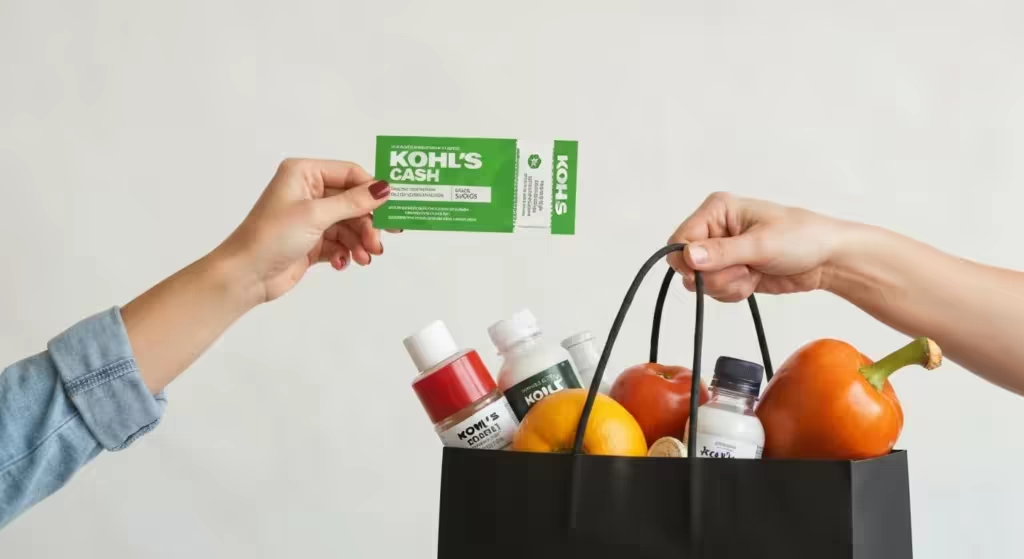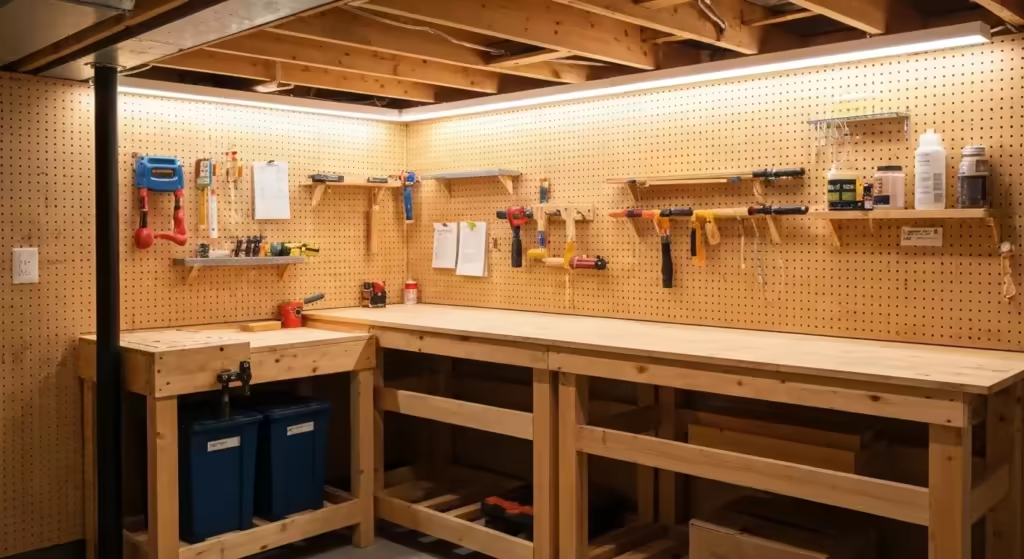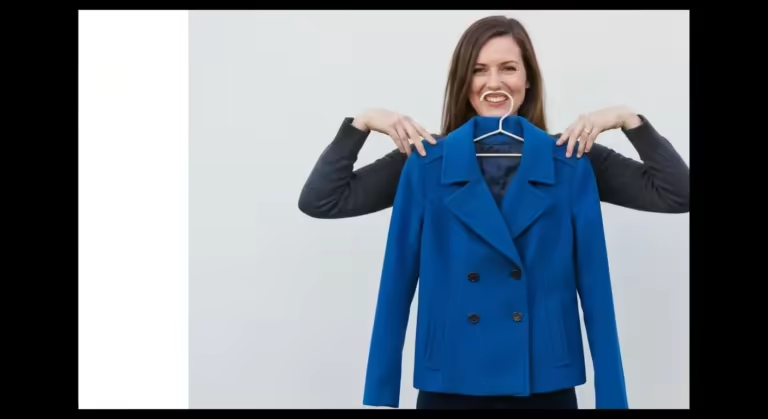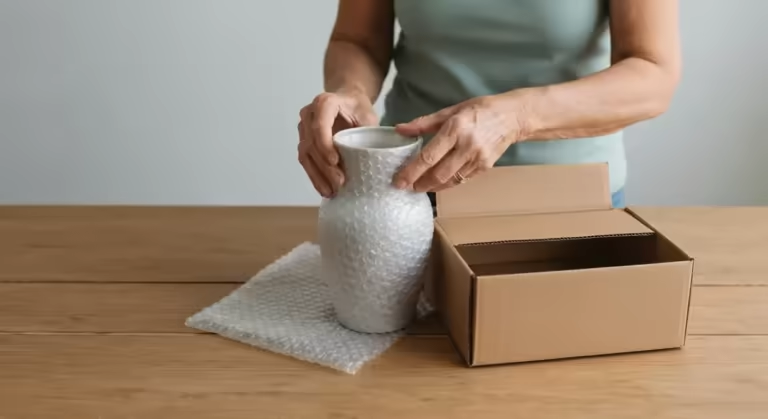The silence was the first thing that became unbearable. For forty-two years, our home had been filled with a symphony of life. The sound of my husband, Tom, tinkering in his workshop, the distant hum of the television with his favorite Westerns, the cheerful chaos of our children growing up, and later, the delighted squeals of our grandchildren during weekend visits. But a year after Tom passed, the silence was all that was left. It was a heavy, suffocating blanket that draped itself over every room in our four-bedroom house.
The house itself, once our proudest achievement, had become my biggest burden. It wasn’t just the memories that haunted its halls; it was the practical realities. The roof would need replacing soon. The property taxes seemed to climb every year. And the simple act of cleaning it felt like an impossible, Herculean task. I was living in a museum of a life that no longer existed, and the cost of admission—financially and emotionally—was simply too high.
The decision to downsize to a small, two-bedroom condo near my daughter was a logical one. Everyone agreed it was the right move. My head knew it was the right move. My heart, however, was staging a full-blown rebellion. How could I leave the place where we’d measured our kids’ heights on the kitchen doorframe? The garden Tom had so lovingly cultivated? The worn armchair where he read the paper every single morning?
But the most daunting task of all was not selling the house itself, but confronting its contents. Forty-two years of accumulated living. Every closet was a time capsule, every drawer a treasure chest of memories. The question wasn’t just what to keep; it was the agonizing dilemma of what to do with everything else. This was the start of my long, often painful, but ultimately liberating journey to answer a question that sounds simple but is one of the most complex a person can face: How do you decide when to sell versus donate your old items?
The First Attempt: Drowning in Emotional Quicksand
I started with what I thought was a logical plan. I bought packing boxes, a thick black marker, and a roll of tape. I designated corners of the living room for four piles: Keep, Sell, Donate, and Trash. It looked so organized, so decisive. I felt a flicker of control for the first time in months.
That feeling lasted approximately ten minutes.
I chose to start in our master bedroom closet. His side had remained untouched. I slid a hanger across the rod, and the faint, familiar scent of his cologne filled the air. I pulled out a worn flannel shirt, the one he always wore for yard work. My knees felt weak. I sat down on the floor, clutching the shirt to my chest, and I wept. The shirt didn’t go into a pile. It stayed in my hands for the rest of the afternoon.
This became a pattern. I’d open a box of old photographs and get lost for hours. I’d find the kids’ elementary school art projects and feel the same surge of pride I did thirty years ago. Every object had a story, a connection, a ghost. My neat little piles remained stubbornly empty. The “Keep” pile, in theory, was my entire house. How could I sell a memory? How could I donate a piece of my heart?
Weeks turned into a month, and all I had accomplished was moving sentimental clutter from one room to another, creating what my daughter gently called “sadness nests.” I was paralyzed. The sheer volume of our life together was overwhelming, and every decision felt like a betrayal. I was not just getting rid of stuff; I felt like I was getting rid of him, piece by piece.
The Wake-Up Call: A Leaky Pipe and a Hard Truth
The turning point wasn’t an emotional breakthrough. It was a leaky pipe under the kitchen sink. I woke up one morning to a small pond on my linoleum floor. The plumber’s bill was over four hundred dollars, an expense that made my stomach clench. It was a stark reminder that this house, my beautiful memory box, was also a financial entity, and it was slowly draining the resources I needed to live my own future.
That plumber’s bill did what weeks of gentle prodding from my children could not. It lit a fire under me. I realized my inaction wasn’t honoring Tom’s memory; it was jeopardizing the security he had worked so hard to provide for me. I had to stop thinking with just my heart and start building a practical framework that could guide me when my emotions threatened to take over.
I sat down at the kitchen table, this time with a notebook and a pen, and decided to stop thinking about things and start thinking about systems. I needed rules. Cold, hard, impersonal rules that could act as a buffer between my grief and the task at hand. This is when I began to truly define what “sell” and “donate” would mean for me.
Crafting My “Sell” System: The Model Train Debacle
My first instinct was simple: I’ll sell anything that’s valuable. This seemed like a brilliant, straightforward rule. Tom had been a collector of many things, but his pride and joy was an enormous collection of vintage Lionel model trains. They took up an entire corner of the basement. “These will be worth a fortune someday, honey,” he’d always say with a grin. “This is our retirement fund.”
This, I thought, was my chance to honor his words and add a significant cushion to my own retirement fund. So, I dove in. I spent an entire week in the dusty basement, carefully cataloging each engine, boxcar, and piece of track. I bought a book on train collecting. I spent hours online, squinting at tiny photos on eBay and collector forums, trying to match model numbers and assess conditions.
The process was exhausting. Taking photos, writing detailed descriptions, figuring out what was “mint” versus “very good” condition—it was a full-time job. Then came the reality of selling. I listed a few of the “lesser” items on an auction site to test the waters.
It was a disaster.
I was inundated with questions from people who seemed to know far more than I did. I got lowball offers that felt insulting. One person bought a caboose, then complained that the tiny plastic smokestack was a millimeter shorter than the original, demanding a refund. Then there was the shipping. Wrapping a delicate, 60-year-old model train so it wouldn’t break in transit was an art form I had not mastered. The time, the stress, the sheer frustration were immense.
After a month of this, I had sold three pieces and made a grand total of $112. The “fortune” Tom envisioned was technically there, but locked behind a gate of specialized knowledge, immense effort, and high emotional cost. Every negotiation felt like I was haggling over a piece of his soul. It was awful.
This experience was painful, but it was also the most important lesson in my entire downsizing journey. It forced me to completely redefine what “valuable” meant. The price tag was only one part of the equation. From this, I created my new, non-negotiable, three-part rule for selling an item.
My Personal “Sell” Litmus Test
From that day forward, I would only sell an item if it met all three of these criteria:
- It Has a Clear and Obvious Market Value of Over $50. I picked $50 as my personal threshold. I wasn’t going to spend an hour photographing and listing a set of dishes to make $15. The value had to be clear with a quick, five-minute search on a site like eBay or Facebook Marketplace. No deep research dives. If I couldn’t determine a solid price quickly, it wasn’t worth my time.
- It Is Easy to Sell and/or Transport. This was my “train rule.” No more complex, fragile, or difficult-to-ship items. I focused on things I could sell locally for cash via Facebook Marketplace or a consignment shop. Things like a brand-name stand mixer we barely used, a solid wood bookshelf, or a piece of jewelry I never wore. Easy to photograph, easy for someone to pick up. My time and my sanity, I realized, were my most valuable assets.
- It Has Low Emotional Attachment. This was the most important rule. If holding the item brought a lump to my throat, it was not for sale. I would not put a price on a core memory. The process of selling turns a cherished object into a commodity, and I refused to do that to the things that truly mattered. A silver tea set we received as a wedding gift and used maybe twice? Easy. I sold it to a local antique dealer for a fair price. The chipped, faded coffee mug Tom drank from every single morning for thirty years? Priceless. It sits on my new kitchen counter to this day.
This three-part system became my shield. It removed the agonizing guesswork. When I picked up an object, I didn’t ask, “Should I get rid of this?” I asked, “Does this meet all three sell criteria?” The answer was almost always a swift yes or no. It was empowering. It gave me a path forward.
Re-Thinking “Donate”: The Humbling Thrift Store Trip
With my “Sell” system in place, I thought the rest would be easy. Everything that wasn’t a “Keep” or a “Sell” would go into the “Donate” pile. I felt virtuous, imagining all our old-but-good things finding happy new homes. I spent a weekend filling my station wagon to the brim with boxes and bags.
There were clothes, old kitchen gadgets, a set of slightly chipped dinner plates, board games with maybe one or two missing pieces, and a collection of Tom’s old business books from the 90s. I proudly drove up to the donation center behind a local thrift store, ready to bestow my treasures upon them.
A friendly but weary-looking volunteer came out to help me unload. He sorted through my offerings with a practiced eye. He took the clothes. He took the kitchen gadgets. Then he started the “no” pile.
“Sorry, we can’t take chipped dishware,” he said, pointing to the plates. “Or games with missing pieces. Or these books—they’re too outdated.” He also rejected a box of old electronics, explaining they had no way to test them or recycle them if they didn’t work.
I drove away with nearly half of what I had brought. I felt a strange mix of frustration and embarrassment. I thought I was helping, but in reality, I was trying to offload items that were, in some ways, a burden. It struck me then: donation is not a more convenient form of trash disposal.
Just as I had created a system for selling, I now needed a more thoughtful system for donating. I had been thinking about it from my perspective—getting things out of my house. I needed to start thinking about it from the recipient’s perspective.
My More Meaningful Donation Framework
This humbling experience led to a new approach. I broke down my “Donate” pile into a much more intentional process.
- The “Dignity” Test. This became my guiding principle. Before donating an item, I would ask myself: “Would I feel good giving this to a friend or family member in need?” This simple question reframed everything. An item should be a gift, not a problem. It needed to be clean, functional, and complete. The slightly stained towel, the toaster that only worked if you held the lever down, the sweater with a small hole—these failed the Dignity Test. They were not donations.
- Targeted Donations. Instead of one giant drop-off, I started researching where my items could do the most good. This took a little more effort, but it was infinitely more rewarding.
- Tom’s professional suits and my old work clothes went to Dress for Success, a charity that helps people get back into the workforce. I could picture someone acing a job interview in one of his suits, and it made me smile.
- The mountains of old towels, sheets, and blankets that weren’t quite good enough for people went to the local animal shelter. They were thrilled to have them for bedding.
- The still-good, readable books went to the library’s annual book sale, which funded children’s programs.
- The functional tools from Tom’s workshop that I couldn’t sell went to a local Habitat for Humanity ReStore.
- Embracing the “Let It Go” Principle. For all the good, usable items that weren’t valuable enough to sell but passed the Dignity Test (think everyday dishes, small appliances, decent clothing, home decor), the general thrift store donation was perfect. Donating these items became an act of release. It was my way of honoring the item’s usefulness by giving it a chance at a second life, freeing me from its physical and emotional weight without the guilt of simply throwing it away.
The Forgotten Categories: “Legacy” and, Yes, “Trash”
My Sell/Donate/Keep system was working well, but I soon realized two crucial categories were missing. Not everything fit neatly into those boxes.
The first was what I came to call the “Legacy” pile. These were the items with zero monetary value but immeasurable emotional value. Photo albums, love letters Tom and I wrote to each other in college, our children’s bronze-plated baby shoes, a folder of his terrible but heartfelt poetry. These were the true treasures, the soul of our family history.
I couldn’t possibly keep all of it. I’d need a separate moving truck. So, I undertook one of the most difficult but beautiful projects of this entire process: curating our legacy. I bought an inexpensive scanner and spent my evenings digitizing thousands of photos and important documents. I saved them to a cloud service and to a few external hard drives, giving one to each of my children. This ensured the images were safe from fire or flood and could be easily shared.
For the physical items, I set a firm limit. I allowed myself one large plastic tub—my “Memory Box.” For my children, I created one smaller box each, filled with their own report cards, artwork, and special keepsakes. Choosing what made the cut was agonizing, but it forced me to focus on what was most representative of our life. It wasn’t about saving everything; it was about saving the best things.
The second missing category was the hardest for me to accept: “Trash.” I grew up in a generation where you wasted nothing. Throwing things away felt irresponsible, almost sinful. But I had to face reality. The broken coffee maker we swore we’d fix, the stack of promotional mugs from banks that closed a decade ago, the hopelessly stained rug in the basement, the collection of dried-out pens. These items served no one. They failed the Sell test, the Donate test, and they certainly weren’t Legacy items.
Learning to throw things away was a final, crucial step in my liberation. I had to give myself permission. I started telling myself, “This item has served its purpose. Its life is over. It is okay to let it go.” It wasn’t waste; it was the respectful conclusion of an object’s life cycle. Putting that first bag of genuine, no-guilt trash out on the curb felt like a monumental victory.
The Resolution: A Lighter Home, A Lighter Heart
It took me nearly a year to empty that house. The process was a marathon, with sprints of frantic activity followed by weeks of quiet reflection. There were days I felt like a ruthless efficiency expert and days I felt like a grieving widow, and I learned that I needed to be both to get through it.
The day the movers took the last of my “Keep” boxes to my new condo was surreal. I walked through the empty rooms of my old house, the silence no longer suffocating, but peaceful. The echoes were still there, but they were sweet, not sad. I hadn’t erased our life; I had distilled it. I had honored it.
Today, in my bright, small condo, I am surrounded only by the things I truly love and use. My monthly expenses are a fraction of what they were, and the financial anxiety that once kept me up at night is gone. I have a beautiful view of a park, and I have the time and energy to enjoy it. The proceeds from selling the house and my carefully selected items have given me a security I never thought I’d feel again.
This journey taught me more than just how to sort through clutter. It taught me about myself, my resilience, and the true meaning of value. If you are facing a similar mountain, I hope my story can offer you a small map.
The Lessons I Carry With Me
Looking back, my entire, year-long struggle can be boiled down to a few core lessons that I now consider my expert tips—earned the hard way.
- Your time and emotional energy are your most precious commodities. Before you commit to selling something, calculate the real cost. I created a mental “hourly wage” for myself. If I thought I could sell an item for $30, but it would take me three hours of research, photography, and communication, I was effectively working for $10 an hour. My peace of mind was worth far more than that. Donating it would have taken ten minutes. The choice became clear.
- Value is deeply personal and has little to do with money. The market told me the model trains were valuable. My heart told me Tom’s chipped mug was valuable. The market was wrong, for my purposes. Don’t let a price tag dictate an object’s worth to you. The most valuable things in my life are the ones that could never be sold.
- Thoughtful donation is an act of grace. Shifting my mindset from “getting rid of stuff” to “thoughtfully re-homing items” changed everything. It transformed a chore into a meaningful act of closure and community contribution. It’s a way to let an object’s story continue with someone else.
- A simple system is your best defense against emotional overload. When you’re overwhelmed, you can’t trust your own judgment. My rigid systems—the Sell-Donate-Legacy-Trash framework with all its sub-rules—were my salvation. They allowed my logical brain to take the lead when my grieving heart wanted to keep everything.
- Be patient and kind with yourself. This process is not just about logistics; it is a profound emotional journey. Some days you will make incredible progress. Other days, all you’ll be able to do is sit with a box of memories and grieve. Both are essential parts of the process. Allow yourself the grace to do both. You are not just closing a door on a home; you are honoring a life and bravely stepping into a new chapter of your own.
I never thought I’d be happy again after Tom died, and certainly not in a small condo surrounded by a fraction of our things. But I am. I feel lighter. Not because I have less, but because what I have left is what truly matters. And that is a fortune no one can ever take away.














